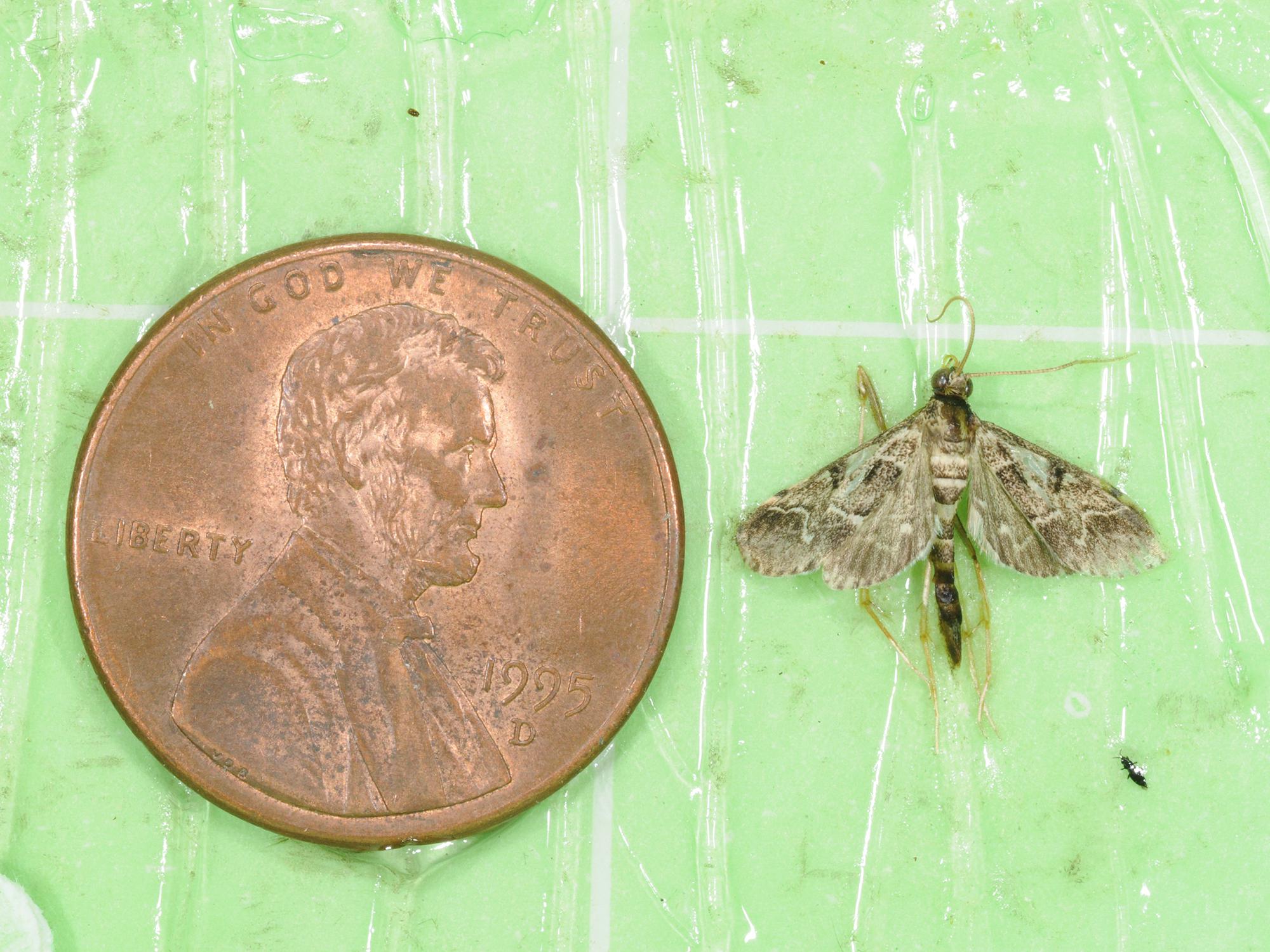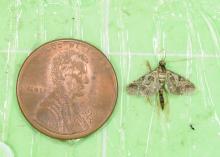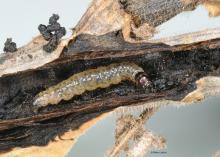Information Possibly Outdated
The information presented on this page was originally released on March 21, 2018. It may not be outdated, but please search our site for more current information. If you plan to quote or reference this information in a publication, please check with the Extension specialist or author before proceeding.
Introduced moth is a pest to green industry
STARKVILLE, Miss. -- A new moth has become a serious pest to the greenhouse and nursery industries since it entered the state in 2010.
Blake Layton, an entomologist with the Mississippi State University Extension Service, said the European pepper moth was detected in California in 2004 before showing up in Mississippi six years later. Its caterpillars attack a wide range of ornamental plants and vegetables.
“The European pepper moth can be especially damaging to nursery and greenhouse crops such as chrysanthemums, poinsettias and geraniums,” Layton said. “Infestations are difficult to detect, and problems often go unrecognized until heavy damage has occurred, resulting in plants that are unmarketable.”
The feeding behavior of this moth’s caterpillars sets it apart from that of most similar insects.
“They tend to remain near the base of the plant, leaving silk webbing along the surface of the growing media,” Layton said. “They will even tunnel into the potting media and feed on roots.”
These caterpillars can attack all parts of the plants. Damage primarily includes defoliation of lower leaves, boring into stems and girdling the main stem at the base of the plant.
“This type of injury is similar to that caused by a beaver chewing the bark off a pine or sweetgum tree,” Layton said. “These caterpillars will even eat dead leaves lying on the growing media and roots growing through the drain holes in the bottom of the pot.”
As adults, these small, gray moths are less than half an inch long and relatively inconspicuous. When flushed, they tend to fly just short distances before coming to rest on the undersides of leaves, where they are difficult to see. Using commercially available pheromone traps is the best way to determine if the moths are present in a nursery or greenhouse.
Fred Ensz, owner Busy Bee Nursery in Macon, has been dealing with the European pepper moth caterpillars in geraniums and mums.
“Two years ago, we lost 50 percent of our mums crop to the European pepper moth,” Ensz said.
When his plants in the greenhouse began to wilt, Ensz brought in Extension plant pathologist Alan Henn to dissect the plants and identify what he thought was a rust disease. The wilt was being caused instead by the moth, which they did not discover until late that season.
“Blake was the one who found it first,” Ensz said. “He had heard that these moths were coming into the state. He set up a trap in our geraniums, because they like geraniums, and found them.”
The moths are difficult to see, even on a bright, sunny day, and they are even harder to treat.
Control of European pepper moths is difficult, as the caterpillars feed deep within the plants or within the growing media, where they are difficult to reach with foliar sprays. Certain pesticides are effective when properly applied, which means the spray penetrates the outer canopy and reaches the base of the plant and the growing media.
Whether this pest has become established in the landscape or remains in the nursery and containerized vegetable trade is not yet known. Based on the climate of its native habitat, the European pepper moth could become established on the West Coast and the Southeast. In the landscape, they seem susceptible to very cold weather.




